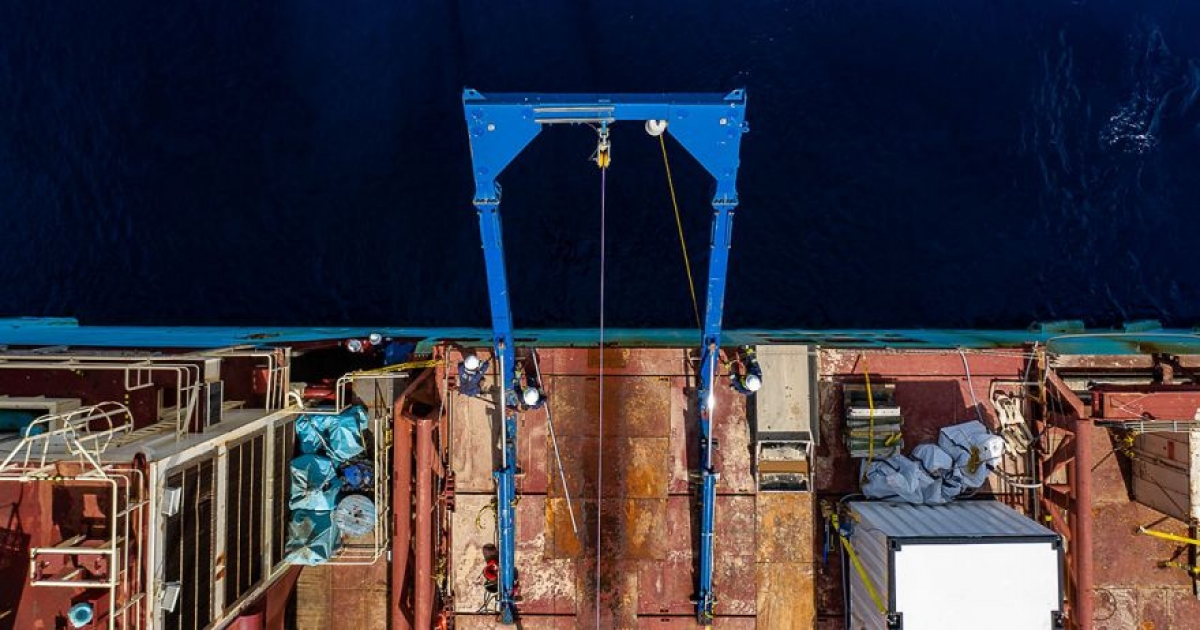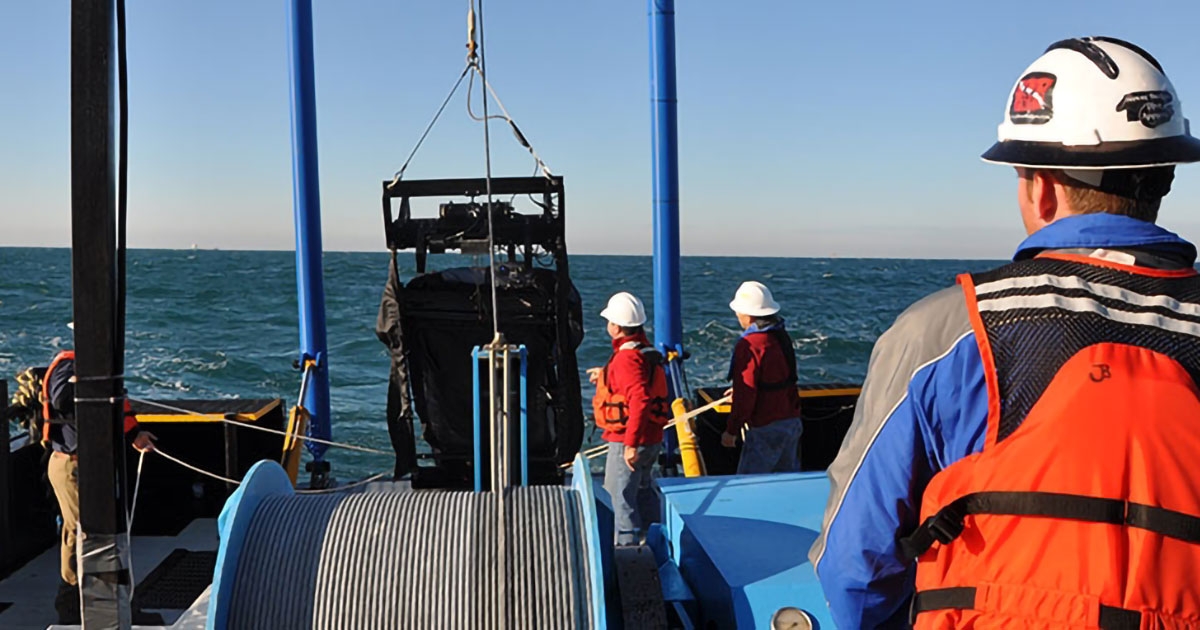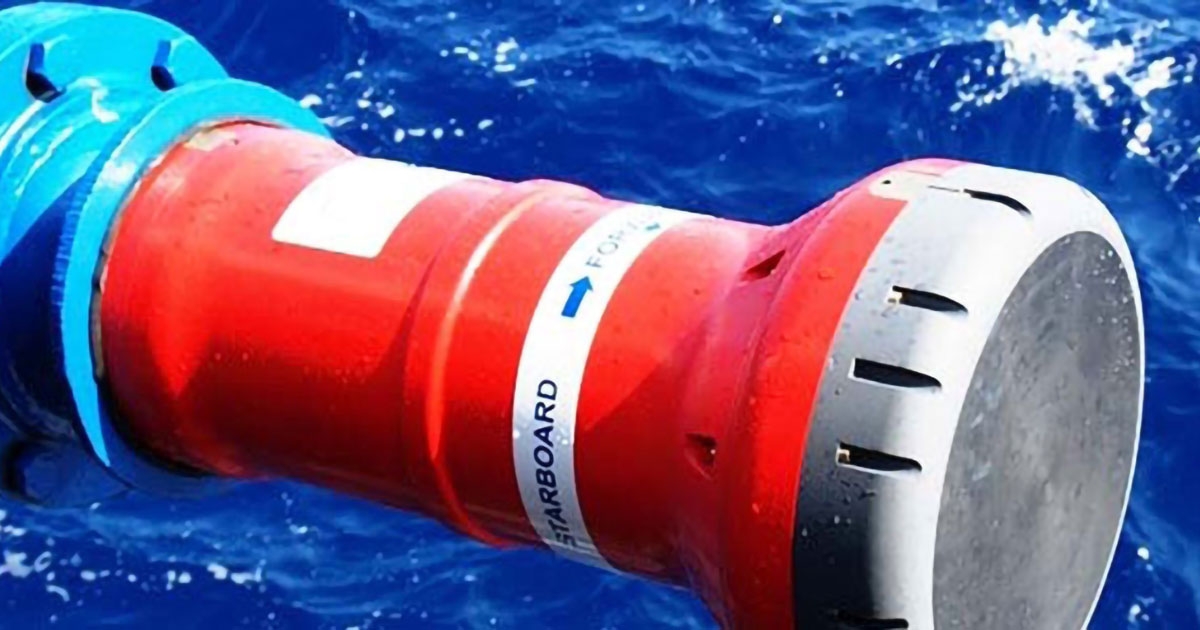As state-led contractors carry out their environmental due diligence and test their subsea technologies in the Pacific’s Clarion Clipperton Zone (CCZ), signs suggest that ocean mining extraction could become a reality within the next few years.
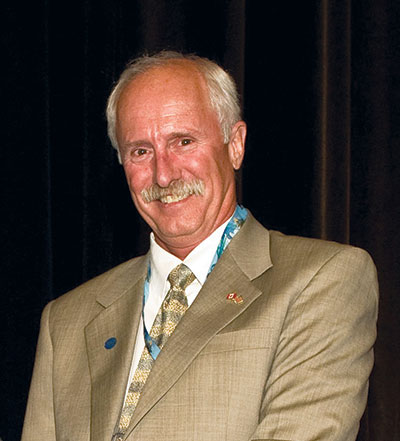 Here we publish part two of our exclusive interview—The Past, Present and Future of Ocean Mining—with Ted Brockett, managing director of Okeanus Science & Technology. As a senior member of the subsea engineering team responsible for the first ever pilot test in the CCZ, in 1978, few are better placed to comment on the operational issues at hand and ponder whether ocean mining could make a meaningful contribution to the renewable energy sector in the coming years.
Here we publish part two of our exclusive interview—The Past, Present and Future of Ocean Mining—with Ted Brockett, managing director of Okeanus Science & Technology. As a senior member of the subsea engineering team responsible for the first ever pilot test in the CCZ, in 1978, few are better placed to comment on the operational issues at hand and ponder whether ocean mining could make a meaningful contribution to the renewable energy sector in the coming years.
ON&T: What is the current outlook for ocean mining, especially given the unusual challenges of 2020?
TB: This is an interesting moment for the ocean mining community. Many stakeholders believe that this is the moment to transition from exploration activities to the phased planning for extraction operations. We have the technology and know-how; now all we need is a clear roadmap to commercialization.
However, as with most industries, COVID-19 has been disruptive. For some time, the expectation among stakeholders has been that the draft exploitation regulations for mineral resources in the CCZ, more commonly referred to as the Mining Code, would be published by the International Seabed Authority (ISA)—the UN-sanctioned body with the authority to grant exploration/extraction contracts to state sponsors and contractors in international waters—by the end of 2020.
This is an extremely complicated set of guidelines, procedures and regulations, and with the ISA’s July assembly and council meetings postponed due to the pandemic, ratifying the Mining Code may no longer be a realistic goal for this year. The ocean mining community is no stranger to delay, but the clock is ticking as some of the current exploration contracts are due to expire in 2021. Time will tell, but I remain optimistic that the harvesting of polymetallic nodules is possible within 2 – 3 years.
ON&T: Why, specifically, polymetallic nodules?
TB: While there is still interest in mining other mineral seabed deposits—namely cobalt-rich crusts and seafloor massive sulfites—the general consensus right now is that harvesting nodules is the least disruptive to the seabed environment. What’s more, we know how to do it. Several mining consortiums ran very convincing full-scale pilot mining tests in the CCZ in the late 1970s, of which Ocean Management Inc. (OMI) was the first, in 1978. I was the lead engineer for OMI and can still remember thinking, as we reeled in these nodules by the thousand, how prosperous ocean mining could be under the right market conditions.
ON&T: So, given your experience, tell us more about these polymetallic nodules.
TB: They are typically 4 – 10 cm in diameter and are often described as potato-like in size and shape. To the touch, they feel somewhat like volcanic rock. Back in the 1970s we called them manganese nodules, on account of their high manganese content (c. 30%). But they also contain other valuable metals, notably nickel (1.5%), cobalt (.25%) and copper (1.25%). Other constituents include iron, silicon, aluminum, titanium, magnesium, potassium, and barium, and traces of other rare earth elements. They are 100% usable. Compare that to the typical yields associated with the terrestrial mining of scarce metals, and nodules promise far greater returns on investment. The difference between today and the late 1970s, of course, is that society’s needs have changed; a more sustainably minded planet demands that we explore alternative natural resources.
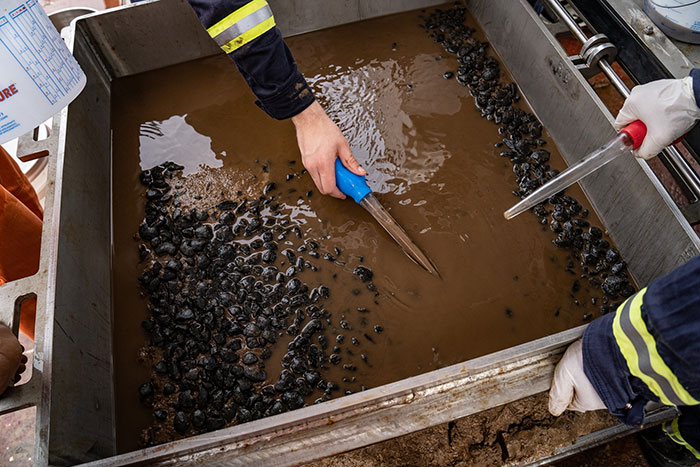 ON&T: How so?
ON&T: How so?
TB: There is growing interest in harnessing renewable energy as an alternative to using fossil fuels. But renewable energy is reliant on metals, both for building out critical infrastructure and advancing battery technology. Terrestrial mining grades for those metals are diminishing, so the prospect of tapping the abundant subsea resources available to us seems like a practical next step.
ON&T: How abundant are these resources, and where?
TB: Nodule accumulations of commercial note have been discovered in four geographical locations, including the Penrhyn Basin, the Peru Basin, and the north Indian Ocean. But the CCZ is home to the richest concentrations. The CCZ is an abyssal plain spanning 5,000 km across the central Pacific, at depths of 4,000 – 5,500 m. Nodule distribution varies across the CCZ, as do accumulations, which on average range from 15 – 20 kgs of nodules per m2. Estimates differ, but the numbers are staggering—in terms of tonnage, we are talking in the tens of billions.
ON&T: What provisions are in place to safeguard against some of the well documented environmental concerns?
TB: This where the ISA plays such an important role, which came into power in 1994, upon the entry into force of the 1982 United Nations Convention for the Law of the Sea (UNCLOS). The ISA is responsible for regulating seabed activities beyond the limits of national jurisdiction, in waters defined as the Area. This is why the Mining Code is so important; without it there will be no mining at all.
In terms of specific provisions, the ISA has approved a number of initiatives to ensure that marine environments are protected from any harmful effects that could arise from mining-related activities. In 2012, the ISA introduced the Environmental Management Plan for the CCZ, which established Areas of Particular Environmental Interest (APEIs) within the CCZ to preserve the region’s full range of habitats and communities, including those native to abyssal plains, abyssal hills, seamounts and fracture zones. There are currently nine 400 km2 APEIs, which together represent more than 30% of the total CCZ management area. There have been calls for additional APEIs, alongside other collaborative initiatives, such as designated ‘no-take’ fields within contractor zones, to promote further habitat protection.
ON&T: Is such collaboration among contractors likely?
TB: Collaboration and transparency is essential for ocean mining to prosper. Let’s not forget, the environmental studies being conducted right now under these exploration contracts is of vital scientific importance. Our understanding of the CCZ’s seafloor ecosystems and the oceanographic conditions that govern them has been vastly accelerated by environmental impact assessment (EIA) studies. We have identified new species, some clearly endemic, and now understand more about the role of hard substrates in such environments than ever before. It would be misleading to suggest that deep-sea mining operations are non-invasive, but we can at least work together to manage our actions responsibly. The ocean mining community’s drive to contribute conscientiously is often overshadowed by some of the more polemic assertions made by the media and environmentalists.
ON&T: Sounds like ocean mining has an image problem?
TB: Mining is associated with drilling technologies. But the harvesting of nodules—which are essentially half submerged in sediment—relies on a collector system, not a drill head. The technical challenge, therefore, is to design a collector system that can perform efficiently within the confines of the mining code. The rest of the technology needed for deployment—drill ships with dynamic positioning and riser pipes—are borrowed straight out of the offshore oil and gas industry playbook.
ON&T: So, even amid mounting environmental concern, there is cause for optimism?
TB: Better yet, there is evidence to suggest that the long-term impacts of seabed disturbances—noise /vibration, light and sediment discharge—are less pronounced than once feared. The long-term monitoring survey of the Japan Deep-Sea Impact Experiment (JET), a series of Benthic Impact Experiments from 1994 – 1996 using an Okeanus (then SOSI) Benthic Disturber, has recently suggested that while the physical impacts of seabed disturbances remain, the marine life continues to prosper.
ON&T: Looking back at the collector system you tested back in 1978, would you do anything differently today in terms of design?
TB: Not much, no. OMI’s drill ship, the SEDCO 445, was equipped with a derrick suspended by gimbals, which reduced the transmission of the ship’s movements to the uptake pipe. Two lifting systems were tested: pumping with axial pumps implanted in the pipe at a depth of 1,000 m and lifting by injection of compressed air between 1,500 and 2,500 m (airlift). Two collecting devices were towed behind the pipe: a hydraulic suction dredge with water jets and a mechanical collector with an inverse conveyor belt. We were able to collect about 1,000 tons of polymetallic nodules from depths of 5,400 m.
ON&T: What advice would you offer engineers looking to refine their extraction methods and equipment?
TB: Keep. It. Simple. Stupid. This fabled U.S. Navy engineering principle served us well. Our system proved capable of harvesting 40 tons of nodules per hour, with a 20 HP collector. The temptation today, especially given the recent advances in subsea engineering and tooling, might be to “overengineer” a system in the interests of stretching yield. But operating at depths of up to 6,000 m comes with inherent challenges. You need to mitigate risks of equipment failure as delays are likely to cripple you financially when working in remote locations like the CCZ.
For a test collector, I would propose a modular system that allows you to test various configurations. Where possible, as we did in 1978, I would prioritize a hydraulic design to ensure that the water does the heavy lifting, sorting and cleaning of the nodules. Eliminating the sediment as early as possible is critical to optimizing nodule capacity in the riser pipe. The collector’s modular design would allow you to identify the optimal configuration using a passively towed collector, a tracked collector, and one that uses an Archimedes screw.
ON&T: What other in-situ testing considerations are important?
TB: Efficiency is not exclusively defined by the mechanical performance of your mining system, but rather the way you deploy it. For example, is it simply a case of “mowing the lawn,” from one perimeter to another, or would a more random pattern of collection be beneficial? I suspect this is a growing deliberation. Either way, the only way you can delineate a mine site is to validate how your equipment works best at depth.
Also, the transparency of in-situ test results is important. Historically, mining companies have always been guarded about their technologies—we certainly were at OMI—but sharing such information would help abate environmental concerns and streamline monitoring and regulation.
Read part one of our exclusive interview series — The Past, Present and Future of Ocean Mining — with Ted Brockett, managing director of Okeanus Science & Technology
This interview was published in Ocean News & Technology's September 2020 Issue
